I am having hard time getting performSegueWithIdentifier to work. I keep getting
"Receiver (<UINavigationController: 0x1e59a9d0>) has no segue with
identifier 'identA'"
What I did is that:
- Step: created a single view application and added a label - "View controller A" to the view controller.
- Step: Dragged and dropped another View Controller and added a label - "View controller B" to the new view controller.
- Step: Chose view controller A and performed Editor->embed in->navigation controller
Step: wired View controller A to View controller B with push segue with Identifier "identA" Like this:

Step: added a call to performSegueWithIdentifier onView controller A's ViewDidLoad. Like this:
- (void)viewDidLoad
{
[super viewDidLoad];
[self.navigationController performSegueWithIdentifier:@"identA" sender:self];
// Do any additional setup after loading the view, typically from a nib.
}
What have I done wrong???

